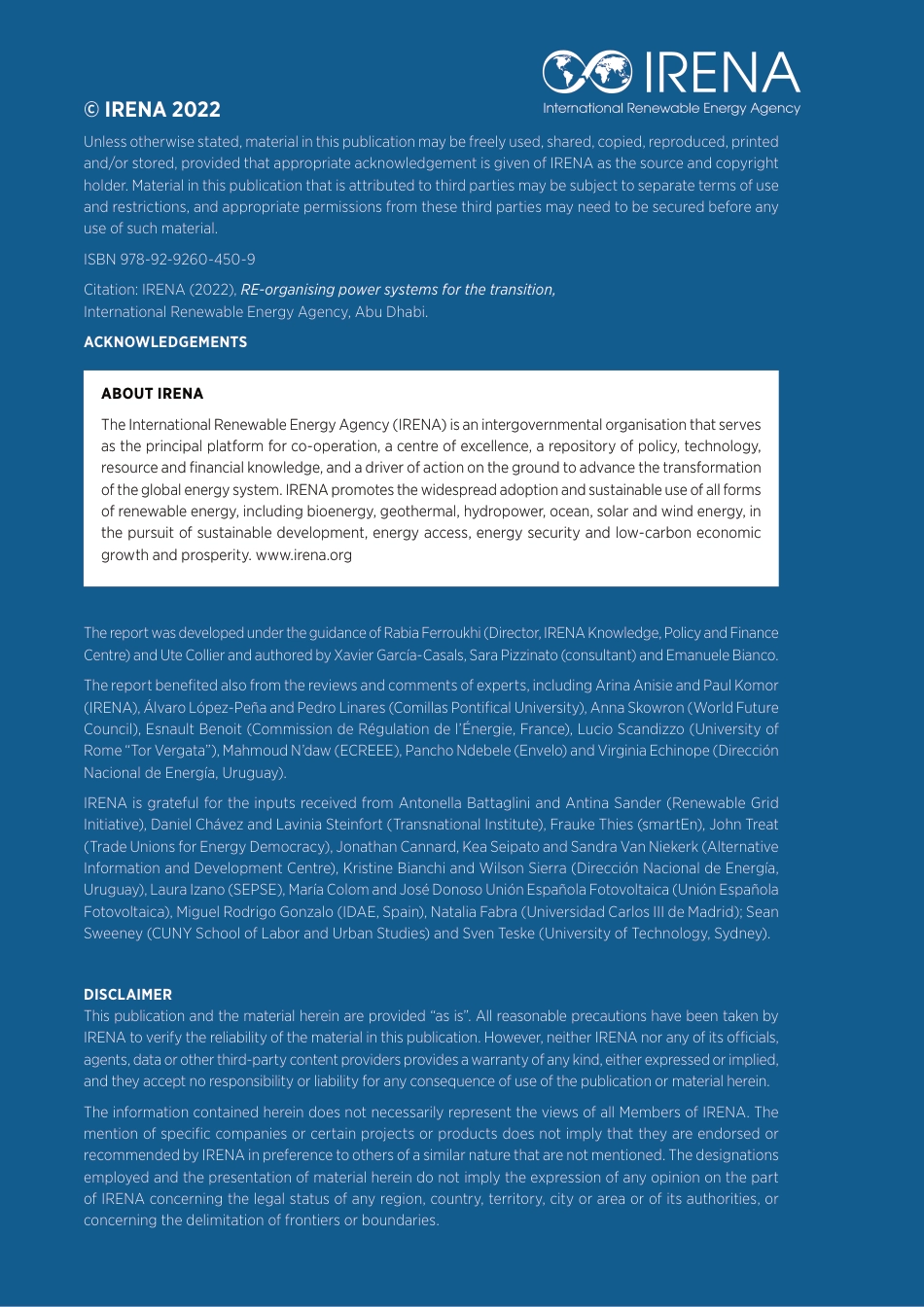RE-organising power systems for the transition© IRENA 2022Unless otherwise stated, material in this publication may be freely used, shared, copied, reproduced, printed and/or stored, provided that appropriate acknowledgement is given of IRENA as the source and copyright holder. Material in this publication that is attributed to third parties may be subject to separate terms of use and restrictions, and appropriate permissions from these third parties may need to be secured before any use of such material.ISBN 978-92-9260-450-9Citation: IRENA (2022), RE-organising power systems for the transition, International Renewable Energy Agency, Abu Dhabi.ACKNOWLEDGEMENTSThe report was developed under the guidance of Rabia Ferroukhi (Director, IRENA Knowledge, Policy and Finance Centre) and Ute Collier and authored by Xavier García-Casals, Sara Pizzinato (consultant) and Emanuele Bianco.The report benefited also from the reviews and comments of experts, including Arina Anisie and Paul Komor (IRENA), Álvaro López-Peña and Pedro Linares (Comillas Pontifical University), Anna Skowron (World Future Council), Esnault Benoit (Commission de Régulation de l’Énergie, France), Lucio Scandizzo (University of Rome “Tor Vergata”), Mahmoud N’daw (ECREEE), Pancho Ndebele (Envelo) and Virginia Echinope (Dirección Nacional de Energía, Uruguay).IRENA is grateful for the inputs received from Antonella Battaglini and Antina Sander (Renewable Grid Initiative), Daniel Chávez and Lavinia Steinfort (Transnational Institute), Frauke Thies (smartEn), John Treat (Trade Unions for Energy Democracy), Jonathan Cannard, Kea Seipato and Sandra Van Niekerk (Alternative Information and Development Centre), Kristine Bianchi and Wilson Sierra (Dirección Nacional de ...



